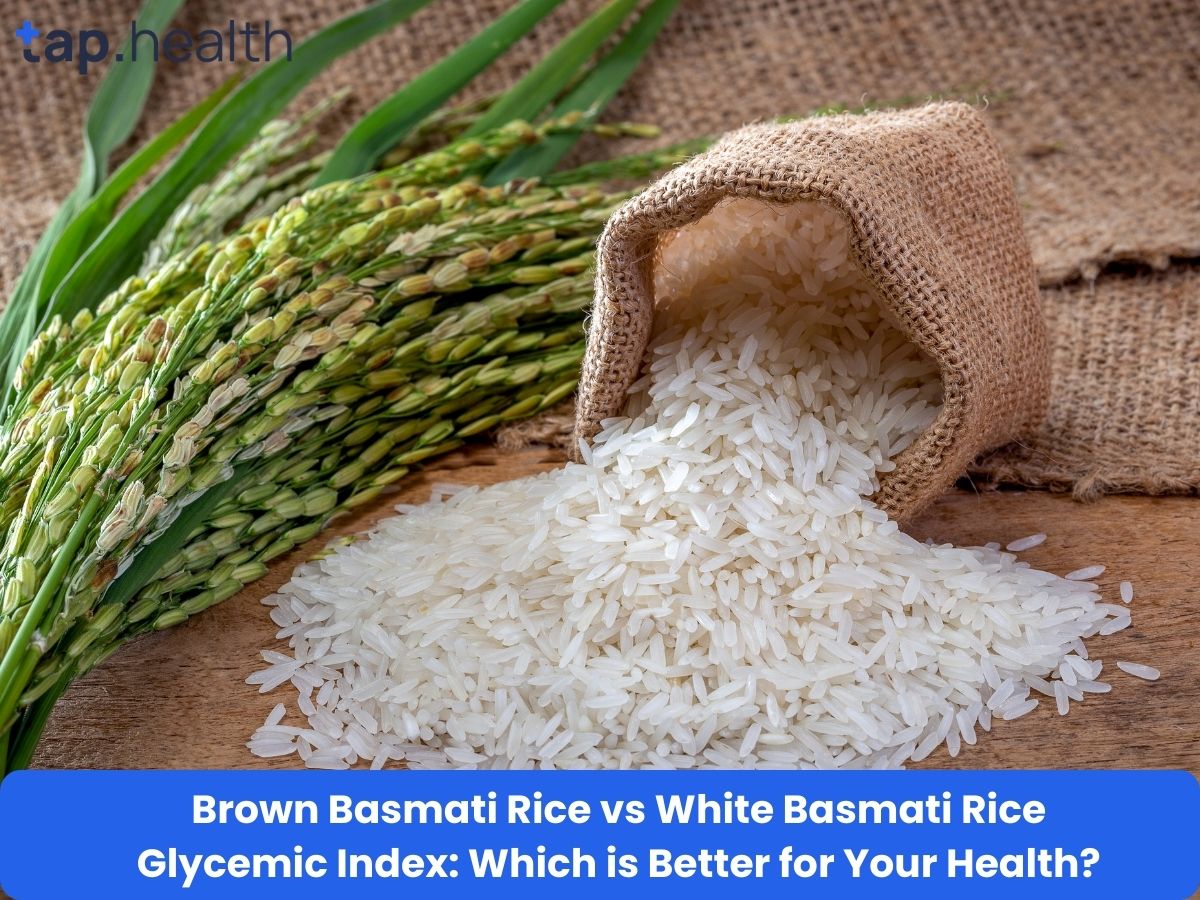Blood sugar (also called blood glucose) is one of the most important indicators of your overall health. Maintaining normal blood sugar levels is crucial for preventing serious health problems like diabetes, heart disease, and nerve damage. If you’ve tested your blood sugar and your result is 110 mg/dL, you might be wondering, “Is this normal?”
This blog post will answer that question in detail, explaining what a 110 mg/dL blood sugar level means, how it compares to other blood sugar levels, and what you can do to maintain a healthy glucose range. If you’ve been concerned about your blood sugar, this post is a must-read for understanding what that number means and how to take control of your health.
What is Blood Sugar?
Blood sugar is the amount of glucose (sugar) circulating in your bloodstream. Glucose comes from the food you eat, especially carbohydrates, and provides energy for your body. However, it’s not just about the food you consume; your body also needs to regulate glucose to keep your cells functioning properly. This is where insulin, a hormone produced by the pancreas, comes in. Insulin helps move glucose from your bloodstream into your cells for energy.
When blood sugar is too high or too low, it can lead to significant health problems. Maintaining balanced blood sugar is crucial for preventing conditions like type 2 diabetes, heart disease, and stroke.
Understanding Blood Sugar Levels
Your blood sugar level can fluctuate throughout the day based on a number of factors, including what you eat, how much you exercise, and how much stress you experience. Blood sugar levels are usually measured in milligrams per deciliter (mg/dL).
Here’s an overview of what different blood sugar readings mean:
- Normal Fasting Blood Sugar (measured after 8 hours of not eating): 70-99 mg/dL
- Prediabetes (Impaired Fasting Glucose): 100-125 mg/dL
- Diabetes: 126 mg/dL or higher
Blood sugar levels can also be measured after eating (postprandial):
- Normal Postprandial Blood Sugar (measured 2 hours after eating): Less than 140 mg/dL
- Prediabetes Postprandial: 140-199 mg/dL
- Diabetes Postprandial: 200 mg/dL or higher
Is an 110 mg/dL Blood Sugar Level Normal?
What Does 110 mg/dL Blood Sugar Mean?
An 110 mg/dL blood sugar level falls into the prediabetes range if it is a fasting blood sugar measurement. Prediabetes means your blood sugar is higher than normal but not yet high enough to be diagnosed as diabetes.
- Fasting Blood Sugar: If your fasting blood sugar is consistently in the range of 100-125 mg/dL, you are considered to have prediabetes.
- Postprandial Blood Sugar: If measured after eating, a blood sugar of 110 mg/dL is still within the normal range, as it should generally be less than 140 mg/dL two hours after eating.
So, 110 mg/dL is not immediately dangerous, but it is a warning sign that you need to pay attention to your blood sugar levels. If you don’t make the necessary lifestyle changes, there is a risk that your blood sugar may continue to rise, potentially leading to type 2 diabetes.
Why Does Blood Sugar Matter?
Maintaining healthy blood sugar is vital because it affects nearly every function in your body, from energy levels to your metabolism. If blood sugar levels get too high or too low, it can result in serious complications.
High Blood Sugar (Hyperglycemia)
When blood sugar levels stay high for an extended period, it can damage blood vessels, leading to complications like:
- Heart disease and stroke
- Kidney disease
- Nerve damage (neuropathy)
- Vision problems
- Increased risk of infections
Low Blood Sugar (Hypoglycemia)
On the other hand, if blood sugar drops too low, it can result in:
- Fatigue
- Dizziness
- Confusion
- Severe hypoglycemia can lead to seizures and loss of consciousness
Therefore, it is essential to keep your blood sugar within a healthy range to avoid both high and low blood sugar complications.
What Factors Influence Blood Sugar?
Several factors can influence your blood sugar levels. It’s important to understand what can cause fluctuations in blood glucose, so you can manage your levels effectively.
1. Diet
Your food choices have a major impact on your blood sugar. Carbohydrates, particularly refined sugars and processed foods, cause rapid spikes in glucose. In contrast, foods high in fiber, protein, and healthy fats help stabilize blood sugar levels.
2. Physical Activity
Exercise is one of the most effective ways to manage blood sugar levels. Physical activity helps your body use insulin more efficiently and allows muscle cells to take up glucose from the bloodstream, lowering blood sugar.
3. Stress
Stress hormones like cortisol can cause blood sugar levels to rise, as they prompt the liver to release more glucose into the blood. Managing stress through relaxation techniques can help keep blood sugar levels stable.
4. Medications
Some medications, including steroids and certain antidepressants, can raise blood sugar levels. If you’re on any medication, it’s important to discuss its potential impact on your blood sugar with your doctor.
5. Sleep
Sleep is crucial for blood sugar regulation. Poor sleep can increase insulin resistance, making it harder for your body to process glucose effectively.
6. Illness and Infections
When you’re sick, your body releases hormones to fight the illness, which can cause your blood sugar to rise. It’s essential to monitor your levels carefully when you’re unwell.
How to Maintain Healthy Blood Sugar Levels
Managing blood sugar is a lifestyle choice that requires consistent effort. Here are some tips to help you keep your glucose levels within a healthy range:
1. Eat a Balanced Diet
The foundation of blood sugar management is a healthy diet. Focus on:
- Complex carbohydrates such as whole grains, legumes, and vegetables.
- Fiber-rich foods like leafy greens, fruits, and whole grains.
- Healthy fats from sources like avocados, nuts, seeds, and olive oil.
- Lean proteins such as fish, chicken, beans, and tofu.
2. Exercise Regularly
Physical activity is a key strategy for maintaining blood sugar balance. Aim for at least 150 minutes of moderate-intensity aerobic exercise per week, along with strength training exercises to build muscle and improve insulin sensitivity.
3. Lose Excess Weight
If you are overweight, losing just 5-10% of your body weight can significantly improve blood sugar levels and reduce your risk of developing diabetes.
4. Monitor Blood Sugar Levels
If you have prediabetes or are at risk for diabetes, regular blood sugar monitoring is essential to track how well your lifestyle changes are working. Use a glucose meter to test your blood sugar levels regularly.
5. Manage Stress
Practice stress-reducing techniques like meditation, yoga, or deep breathing exercises to lower cortisol levels and prevent blood sugar spikes.
6. Get Enough Sleep
Aim for 7-9 hours of quality sleep each night. Poor sleep can interfere with insulin sensitivity and make it harder to regulate blood sugar.
Managing Blood Sugar Through Diet
Diet plays a significant role in managing blood sugar. Follow these guidelines to maintain healthy glucose levels:
- Choose low-GI foods: Foods with a low glycemic index (GI) are absorbed more slowly and have less of an impact on blood sugar. Examples include whole grains, beans, and most vegetables.
- Limit sugary foods and drinks: Refined sugars cause rapid spikes in blood glucose. Avoid sugary snacks, drinks, and processed foods.
- Eat balanced meals: Include a combination of carbohydrates, protein, and healthy fats to prevent sudden blood sugar increases.
- Include fiber-rich foods: Fiber helps slow the absorption of sugar, preventing spikes in blood glucose. Opt for whole grains, legumes, fruits, and vegetables.
Exercise and Blood Sugar Management
Exercise is one of the most effective ways to manage blood sugar levels. Here’s how different types of physical activity can help:
- Aerobic Exercise: Activities like walking, cycling, and swimming can improve insulin sensitivity and help lower blood sugar levels.
- Strength Training: Building muscle mass helps improve glucose uptake and insulin sensitivity, lowering blood sugar.
- High-Intensity Interval Training (HIIT): HIIT is an efficient way to burn calories, increase insulin sensitivity, and improve blood sugar control.
When to Seek Medical Advice
If your blood sugar levels consistently fall in the prediabetes or diabetes range, it’s important to consult with a healthcare provider. Your doctor may recommend additional testing, such as an A1C test (which measures average blood sugar over the past 2-3 months) or an oral glucose tolerance test (OGTT).
If you experience symptoms like increased thirst, frequent urination, blurry vision, or extreme fatigue, these could be signs that your blood sugar is not well-controlled and you should seek medical advice promptly.
Frequently Asked Questions (FAQs) on Is an 110 mg/dL Sugar Level Normal?
1. Is 110 mg/dL blood sugar level dangerous?
No, a blood sugar level of 110 mg/dL is within the prediabetes range. It’s not immediately dangerous, but it indicates an increased risk of developing type 2 diabetes.
2. How can I lower my blood sugar from 110 mg/dL?
You can lower your blood sugar by eating a balanced diet, exercising regularly, losing excess weight, managing stress, and monitoring your blood glucose levels.
3. What should I do if my blood sugar is consistently 110 mg/dL?
If your blood sugar consistently measures 110 mg/dL, consider consulting a healthcare provider to discuss ways to manage your blood sugar and prevent progression to diabetes.
4. Can stress affect blood sugar levels?
Yes, stress can raise blood sugar levels due to the release of stress hormones like cortisol. Managing stress through relaxation techniques can help stabilize blood glucose.
5. When should I check my blood sugar levels?
If you are at risk for diabetes or have prediabetes, you should monitor your blood sugar regularly. Your healthcare provider can help determine how often you should check your levels.
Conclusion
A blood sugar level of 110 mg/dL falls into the prediabetes range, meaning it’s a warning sign that your body is having trouble regulating glucose. While it’s not immediately dangerous, it’s crucial to take proactive steps to prevent further increases in blood sugar and reduce the risk of developing type 2 diabetes.
By adopting a balanced diet, exercising regularly, losing weight, and managing stress, you can maintain healthy blood sugar levels and improve your overall well-being. Regular monitoring and early intervention are key to preventing long-term complications. Start making healthy changes today to take control of your health and future!
References
- Mayo Clinic. (2023). Prediabetes: Overview. Retrieved from https://www.mayoclinic.org/diseases-conditions/prediabetes/symptoms-causes/syc-20355278



